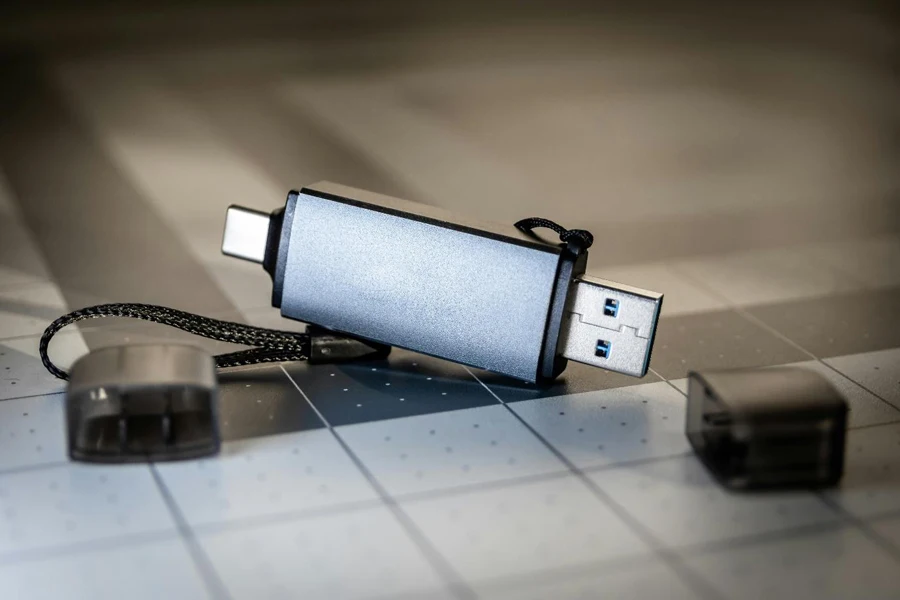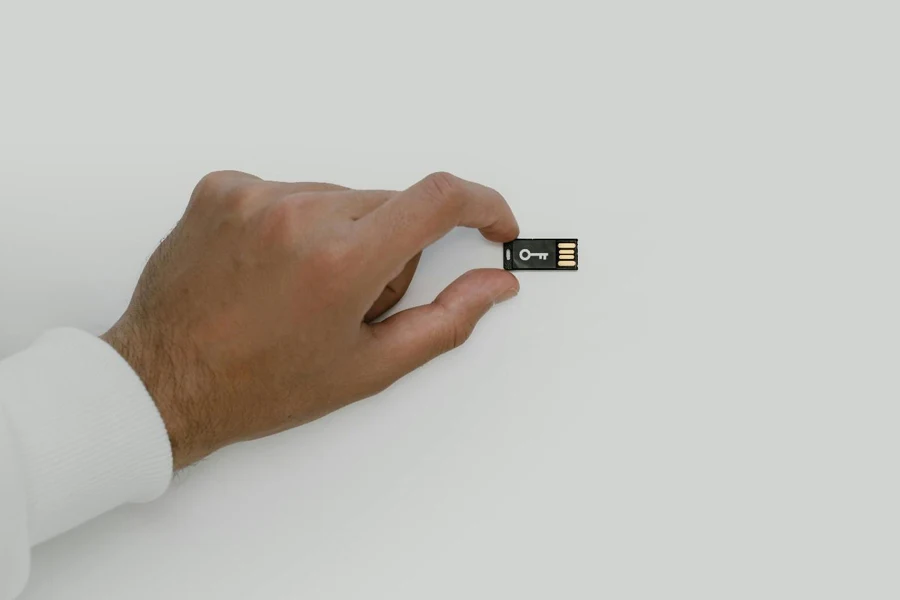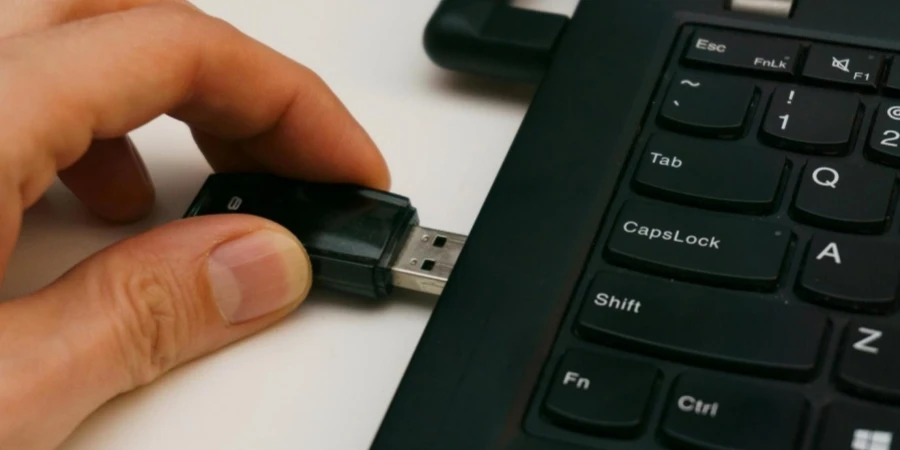In the changing world of data storage solutions, today’s professional buyers must keep themselves updated on the market trends to make informed purchasing choices wisely and strategically. As USB flash drives remain a secure and convenient data-handling tool, being aware of technological advancements and top products in this sector has become increasingly crucial.
This article offers an analysis of the market scenario by spotlighting important advancements and popular models that are propelling the industry ahead. By exploring these observations in-depth, business professionals can decide and choose the best solutions that align with their business requirements.
Table of Contents
● Market overview
● Key technology and design innovations
● Top-selling models driving market trends
● Conclusion
Market overview

Market size and growth projections: A billion-dollar industry on the rise
The worldwide market for USB flash drives is forecasted to experience growth in the coming years. It is estimated to reach $83.41 billion by 2031 from $40.95 billion in 2024, at a compound annual growth rate of 9.3%.
The rising need for spacious storage options in IT and consumer electronics drives the strong expansion. As companies and people generate large amounts of data regularly, the importance of trustworthy and protected storage gadgets, like USB flash drives, is growing significantly.
Regional market leaders: Where demand is soaring
North America is currently dominating the market for USB flash drives because of its tech setup and widespread use of digital devices in the region, according to industry stats from 2022. A significant chunk of market revenue comes from this area, led by the United States’ huge consumer demand and the rise of connected gadgets.
In the forecast period, the Asia Pacific area is projected to experience higher growth rates than other regions. This is due to a surge in demand for mobile and computing devices across countries such as China, India, and Japan. These countries are becoming prominent contributors to this market scene due to advancements in their IT industries and the ongoing trend towards digitalization.
Key market drivers: The forces behind the growth
The USB flash drive market is experiencing growth due to factors like the growing importance of data security, the increased demand for portable storage options, and improvements in USB technology advancements. These enhancements include higher capacity drives and faster data transfer rates, such as those seen in USB 3.0, 3.1, and 3.2 standards that have made USB flash drives dependable tools for individuals and businesses.
The rise in cyber threats has increased the need for secure data storage solutions, driving market growth further. Moreover, the growing use of USB drives in industries like healthcare, automotive, and consumer electronics also expands the market.
Key technology and design innovations

Evolution of USB standards: From 3.0 to USB4
The evolution of USB standards has significantly improved the speed and features of USB flash drives. USB 3.0 is known for its fast data transfer speed of 5 gigabits per second (5 Gbps), made possible by using eight data transfer lines compared to just two, like in USB 2.0. Following that came the USB 3.1 Gen 2 with a throughput of 10 gigabits per second (10 Gbps) achieved through better data encoding methods and SuperSpeed Plus mode. The newest advancement in technology is USB 3.2 Gen 2×2, which takes things up a notch by offering 20 gigabytes per second transfer speeds through a dual lane design that allows each lane to manage 10 gigabytes per second.
USB4 provides speeds of up to 40 gigabits per second through the integration of Thunderbolt 3 and PCIe-based data tunneling technology. This feature enables bandwidth allocation so that the connection can efficiently manage data distribution across various lanes to enhance performance for data transfer and video output. Additionally, the backward compatibility of USB4 ensures that devices adhering to older standards can still function effectively, albeit with lower speeds, upholding the versatility that USB has always been known for.
USB-C and beyond: The shift towards universal connectivity

The switch to USB-C connectors signifies a move towards enhanced adaptable connectivity options compared to the traditional USB-A format. USB-C features a 24-pin connector that enables symmetrical data transmission and power delivery. With a power delivery capacity of up to 100 watts, USB-C can charge high-power devices like laptops while managing data transfer speeds of up to 20 gigabits per second with USB 3.2 Generation 2×2.
The flexibility of USB-C goes beyond transferring data and supplying power; it also accommodates various protocols, like DisplayPort and HDMI, using a single cable to lessen the reliance on multiple connectors significantly. This merging of functions into a single port streamlines device architecture and boosts user satisfaction, specifically in slim and mobile devices. The uniform adoption of USB-C across gadgets ranging from smartphones to high-end laptops highlights its significance as a player in upcoming connectivity solutions.
High-density storage and security enhancements: Meeting modern demands
Nowadays, USB flash drives come with multi-level cell (MLC) and triple-level cell (TLC) NAND flash memory. This enables them to store 1TB and more data in a small size package due to the increased storage cell density achieved by utilizing advanced NAND technologies in the same silicon die without significantly increasing physical dimensions. Moreover, drives now have integrated error correcting code (ECC) and wear-leveling algorithms that help prolong the lifespan of memory cells by spreading out the write and erase cycles across the drive.
Security measures have greatly improved; nowadays, many drives come with built-in hardware encryption using AES‐256 or stronger standards. This encryption takes place at the hardware level to secure data when stored and decrypt it when accessed without causing a delay in data transfer speeds. Furthermore, certain drives now offer boot and cryptographic authentication to prevent changes to the firmware, ensuring that the device remains shielded from tampering or malicious exploits. These advancements not only boost data protection but also establish USB flash drives as an option for safeguarding the storage of confidential data in workplace settings.
Top-selling models driving market trends

Kingston DataTraveler Max: Unmatched speed and capacity
The Kingston DataTraveler Max is a top-tier USB flash drive with impressive speed and storage capacity features. It boasts the USB 3.2 Gen 2 technology that offers read speeds reaching up to 1,000MB/s and writes speeds of up to 900MB/s, positioning it as a standout performer in the market. Available in sizes ranging from 256 GB to 1TB, this drive is crafted to manage data transfers easily. Its small size and convenient features, like the sliding cover and keyring attachment, make it easy to carry around and ideal for users seeking top-notch performance while moving.
SanDisk Extreme Pro: Rugged design with premium performance
The SanDisk Extreme Pro stands out due to its strong build and fast performance capabilities. This USB 3.2 Gen 1 device boasts read speeds of up to 420MB/s and writes speeds of up to 380MB/s, making it perfect for individuals requiring swift file transfers. The standout feature of the Extreme Pro is its sturdy aluminum casing, which adds an extra layer of protection against accidents and mishaps, making it a dependable option for professionals operating in challenging settings. This model comes with up to 1TB storage options to cater to users seeking a blend of speed and durability.
Samsung Bar Plus: Sleek design with solid performance
The Samsung Bar Plus stands out due to its sleek design and strong performance capabilities. This USB 3.1 drive delivers impressive read speeds of up to 300MB/s and comes in 32GB to 256GB sizes. The metal unibody construction provides a high-end appearance and guarantees durability and resilience against daily use. The Bar Plus is also resistant to water, shocks, magnets, and temperature changes, making it flexible for users seeking dependable storage across different settings.

Patriot Supersonic Rage Elite: High-speed for large file transfers
The Patriot Supersonic Rage Elite caters to individuals needing data transfers and requiring substantial storage space. It boasts read speeds reaching 400MB/s and write speeds up to 300MB/s, making it ideal for managing files like HD videos and intricate software applications. The drive’s durable casing shields it from harm, while its small form factor ensures portability. The Supersonic Rage Elite offers storage capacities of up to 1TB. It is well suited for professionals seeking top performance and generous storage space.
Adata Elite UE800: Compact and high-performance
The compact and powerful nature of the Elite UE800 from ADATA is well known in tech circles for its USB 3.2 Gen 2 support and lightning-fast read/write speeds of up to 1 050MB/s and 1 000MB/s respectively. The capless push-out design makes using laptops, tablets, and smartphones a breeze. With storage capacities reaching up to 2TB, the UE800 is a go-to option for those seeking convenience, on-the-go, and ample storage space.
Conclusion
The market for USB flash drives is always changing due to technological progress, which is leading to the need for faster and more dependable storage options with larger capacities. Businesses now depend more on portable data storage solutions like the Kingston DataTraveler Max and SanDisk Extreme Pro, among others, which stand out for their speed resilience and storage space combination. These advancements cater to the increasing data requirements of present-day businesses and pave the way for future innovations in this sector. Keeping up to date with these performing models enables companies to make thought-out choices when picking their storage solutions.




